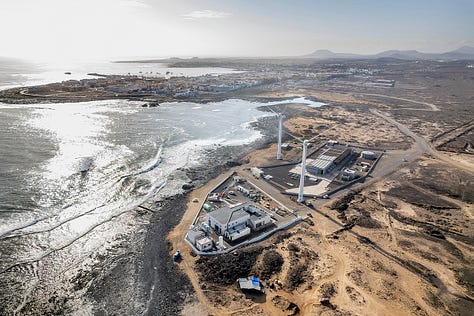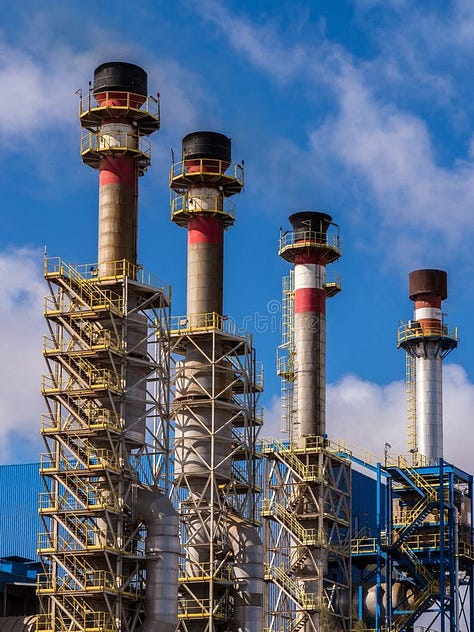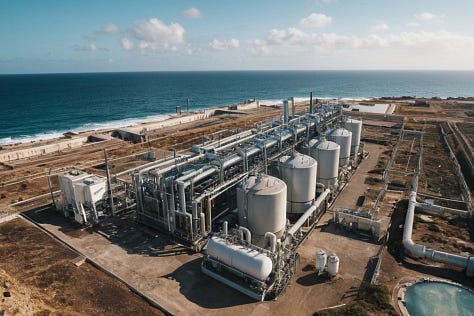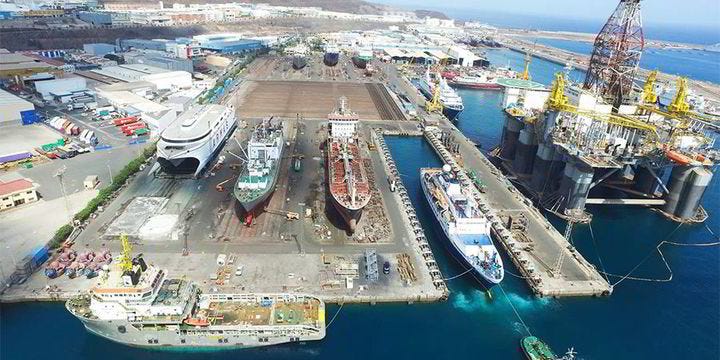The Canary Islands are the next hub for semiconductor manufacturing.
Why Europe's Next Semiconductor Hub Might Rise from Volcanic Islands





Picture this: It's February 2025. Samsung has again delayed the opening of its Texas fab to 2026.
TSMC's Arizona facility faces ongoing workforce challenges, with over 1,000 Taiwanese engineers having their contracts expire, and cultural clashes contributing to retention issues.
In Washington, the Trump administration is renegotiating CHIPS Act grants that Commerce Secretary Lutnick calls "overly generous," while canceling millions in tech hub funding.
Meanwhile, in Brussels, EU officials confront their semiconductor reality: as the European Commission states, "Recent global semiconductor shortages forced factory closures in a range of sectors, from cars to healthcare devices. This made more evident the extreme global dependency of the semiconductor value chain on a very limited number of actors in a complex geopolitical context." The EU currently holds just "10% of the global microchips market" and aims to reach "20% of the global market by 2030" through €43 billion in investments.
But what if the solution isn't in the obvious places—not in Dresden's Silicon Saxony, not in France's high-tech corridors, not even in the Netherlands' ASML heartland?
What if Europe's semiconductor future lies 1,500 kilometers south of Madrid, on seven volcanic islands off the African coast, where corporate taxes are 4% and the trade winds blow year-round?
Welcome to the radical case for the Canary Islands as Europe's next hub for semiconductor manufacturing.
The Perfect Storm Creates Perfect Timing
Two converging forces make this seemingly absurd proposition suddenly serious:
First, American semiconductor policy has entered its chaos era. The Trump administration's renegotiation of CHIPS Act funding is creating uncertainty for the planned US semiconductor investments (See my previous article about it.) https://siliscale.substack.com/p/the-great-chip-exodus-why-the-worlds
Second, Europe just placed the biggest industrial policy bet in its history. The EU Chips Act represents a significant commitment to reducing Europe's dependence on semiconductors. However, each major European semiconductor project faces the same constraints: high costs, complex regulations, and corporate tax rates starting at 25%.
The 4% Corporate Tax Paradise
The Canary Islands are offering something no other EU territory can match: a 4% corporate tax rate through the Zona Especial Canaria (ZEC)—the lowest in Europe, and lower than Ireland's renowned 12.5% rate that helped build its tech hub.
Do the math on a $10 billion fab generating $3 billion in annual revenue. At a 25% tax rate (mainland Europe), you're paying $750 million annually. At 21% (US), it's $630 million. At 4% it is just $120 million.
The Canarychip page initiative highlights exactly the Canary Islands’ potential in the semiconductor sector.
The Engineering Paradise: Why the "Impossible" Isn't
"You can't build semiconductors on islands with water scarcity!" the skeptics say.
Tell that to Singapore, which has become a significant semiconductor hub while facing water constraints. According to Singapore's PUB, NEWater supplies water to "wafer fabrication plants", the biggest users of NEWater. Or to Israel, which operates major semiconductor facilities in water-scarce regions. Intel has operated its Kiryat Gat facility "on the northern edge of the Negev desert" since the 1990s, demonstrating that advanced water management makes semiconductor manufacturing viable even in arid conditions.
The Canary Islands' challenges are real but hardly unique.
Water scarcity is solvable with modern desalination and recycling technology. The islands already have extensive desalination infrastructure - according to research, "desalination capacity in the islands stands at over 600,000 m³/d (covering 55% of water demand)" with "337 desalination plants" as of 2015.
Geographic isolation? Well, Taiwan seems to manage pretty well as the world's chip capital.
Volcanic risk? Japan builds fabs on the Ring of Fire.
No semiconductor workforce? Neither did Costa Rica before Intel arrived. Canarian universities, particularly IUMA, have been a source of talent for companies and institutions in the sector (NXP, Infineon, ASML, IMEC, Microchip, Imagination, Onsemi, Synopsys, etc.)
The islands' universities graduate thousands of STEM students annually, who currently leave for opportunities elsewhere. Build the industry, and you keep the talent.
The European Alternative
This is where the Canary Islands' proposition shifts from interesting to imperative.
While TSMC struggles with construction delays to 2027-2028 and salary disputes in Arizona's 21% tax environment, Europe's semiconductor push faces different but equally serious challenges. Dresden's Silicon Saxony has the engineers, but it pays a 30% corporate tax. Grenoble has a strong R&D ecosystem, but French labor laws hinder it. Dublin has attractive tax rates, but not the infrastructure for heavy manufacturing.
The Canary Islands combine Ireland's tax advantages with Spain's EU membership, add strategic positioning between Europe, Africa, and the Americas, and throw in year-round climate stability that makes Arizona look like a volatile region.
Consider also the verified logistics advantages.
According to the Port Authority, Las Palmas port serves as "a first-class logistics hub, with more than thirty maritime lines connecting with more than 180 ports around the planet." The port has "almost 16 kilometres of berthing line" and handles over 1.2 million TEUs annually. Its strategic location makes it "the most important port precinct in the Mid-Atlantic," serving as a bridge between three continents: Europe, Africa, and America. Not bad at all.
But what about the water?
Yes, let's talk about water. A modern fab requires millions of gallons of water daily. The Canary Islands have seawater. Lots of it. And unlike Arizona, they don't have to negotiate with multiple states for rights to it.
Modern desalination technology has transformed water scarcity from an insurmountable obstacle to an engineering challenge with known solutions. The technology exists, is proven at scale, and with Canary Islands tax rates, the infrastructure investment becomes financially viable.
Semiconductor fabs are perfect desalination customers. They need a consistent, high-volume, ultrapure water supply—exactly what modern reverse-osmosis plants provide. Add the Canaries' abundant sunshine for solar power and constant trade winds for wind generation, and you have a renewable energy ecosystem that supports sustainable manufacturing.
Conclusion
In a world where semiconductor supply chains have become geopolitical weapons, geographic diversification is a matter of survival.
For investors and companies willing to take risks, the opportunity is extraordinary. A European semiconductor hub with 4% taxes, renewable energy potential, and strategic positioning between three continents, it's highly appealing.
The only question is who moves first. Because in semiconductors, like in chess, the bold gambit often beats the safe play.



